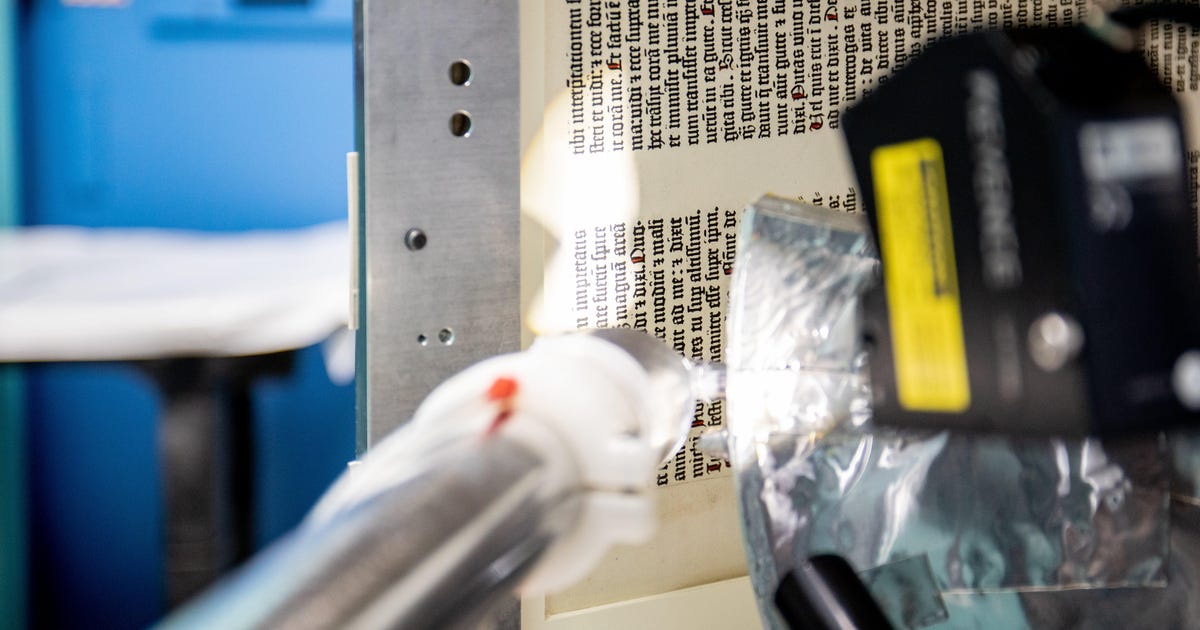
Along with the Bible pages, a 15th-century Korean Confucian text, a page from the Canterbury Tales written in the 14th century and other western and eastern documents are set to endure the barrage.
Researchers are hoping that within the pages of these priceless documents lie clues to the evolution of one humankind's most important inventions: the printing press.
A page from an original Gutenberg Bible (1450-1455 AD) is scanned by a beam from SLAC's synchrotron particle accelerator.For centuries, it was commonly believed Johannes Gutenberg invented the printing press around 1440 AD in Germany.A page of the Gutenberg Bible from the First and Second Epistles of Peter, mid-15th century.A synchrotron is a particle accelerator that fires electrons into a massive ring shaped tunnel in order to generate X-rays (as opposed to SLAC's more famous linear particle accelerator, the two-mile long LCLS).That would indicate they probably came from the printing press themselves.
If they find similarities in the chemical compositions of the documents, that could contribute to ongoing research into the differences and similarities of the printing technologies, and whether there was an exchange of information from East Asian cultures to the West